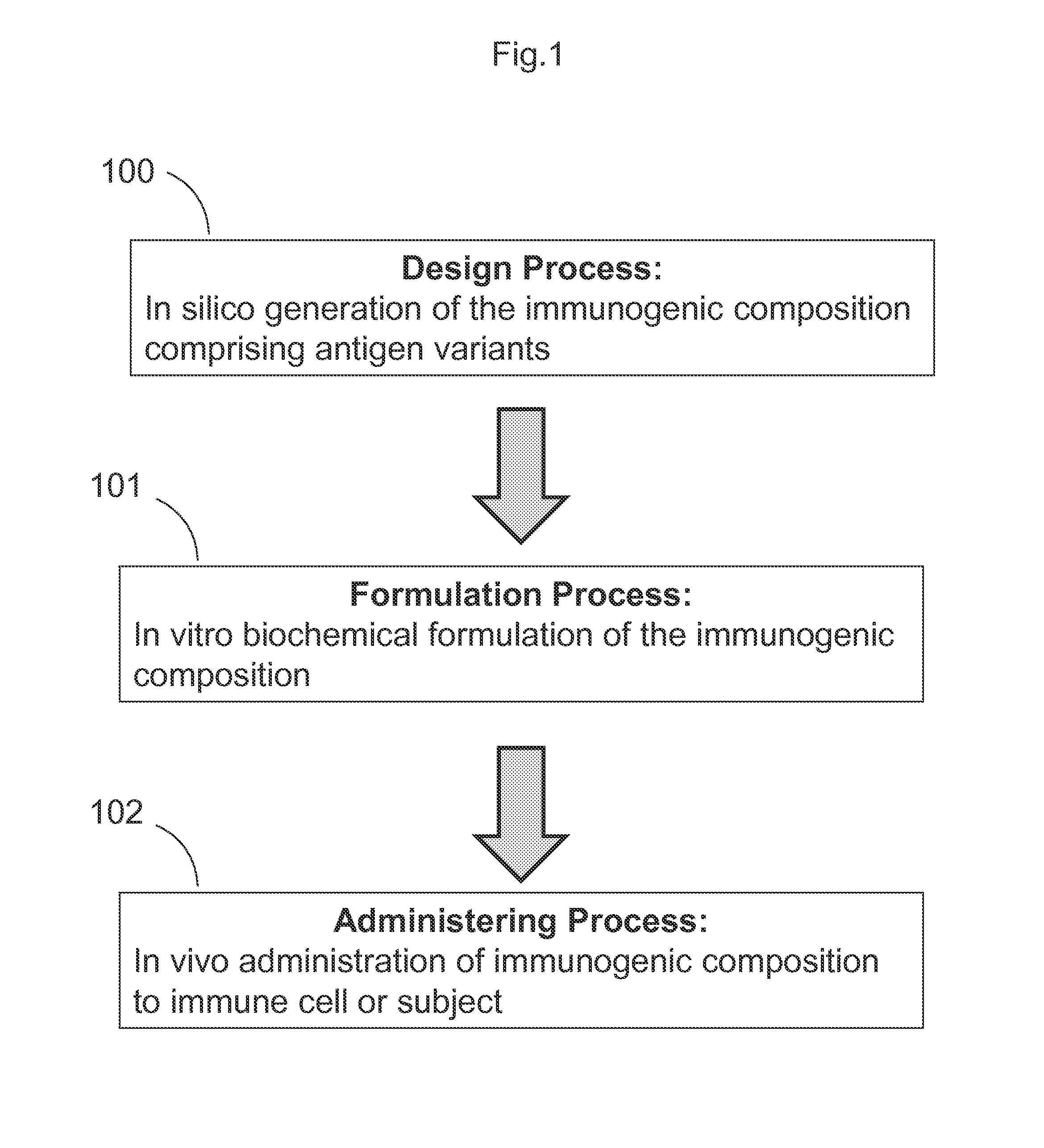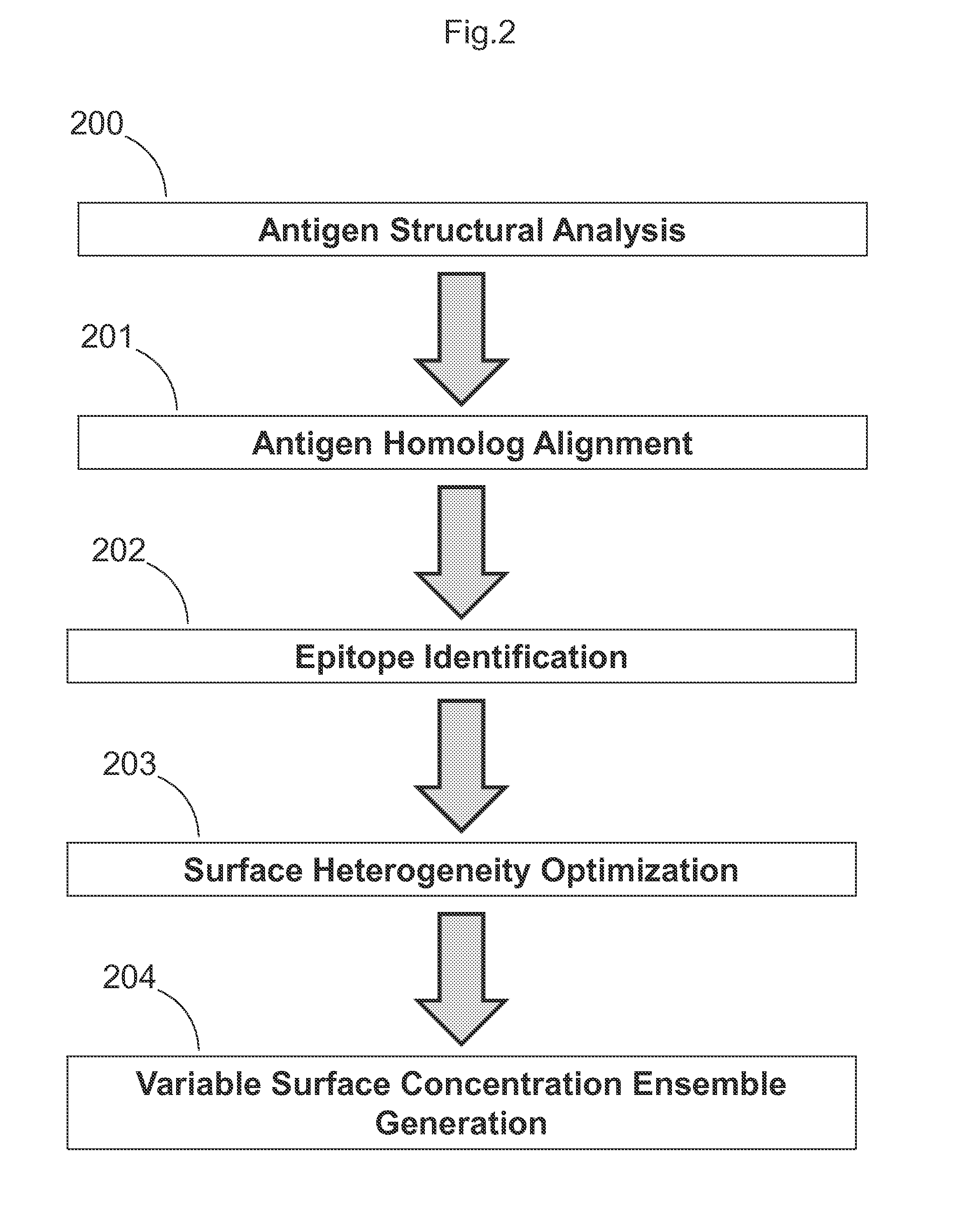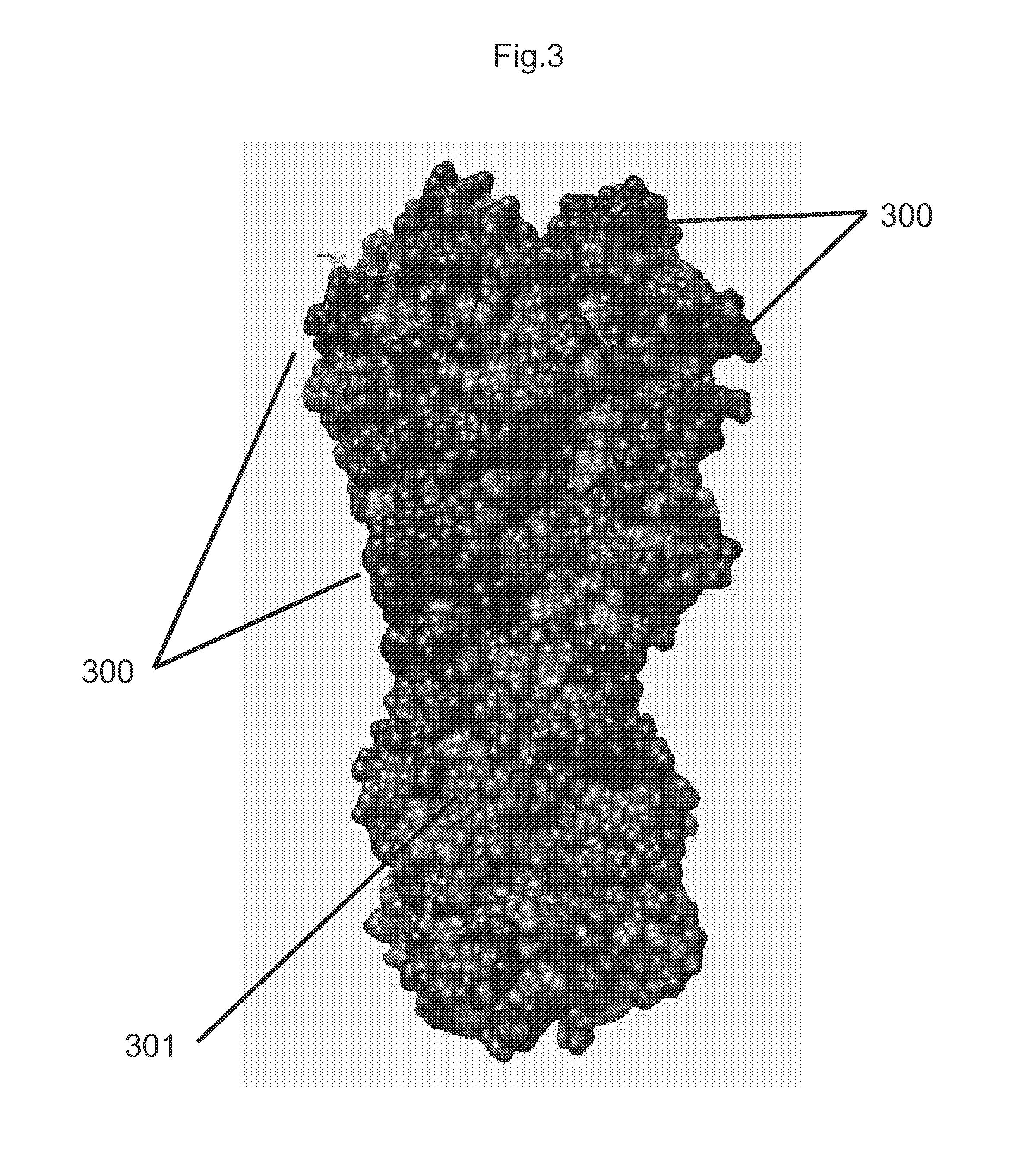Epitope focusing by variable effective antigen surface concentration
- Summary
- Abstract
- Description
- Claims
- Application Information
AI Technical Summary
Benefits of technology
Problems solved by technology
Method used
Image
Examples
example 1
Method of Obtain Structural Models of Variable Surface Glycoprotein
[0438]To get a structural model of a Variable Surface Glycoprotein, 37 structural representatives from NCBI NR database are aligned. From the alignment a profile Hidden Markov Model is generated using the program HMMer3. The HMM is used to detect homologous structures in PDB with a minimum e-value of 1×10−3. The HMM is used to align the structures' sequence to the reference sequence. An expected minimum threshold of 30% identity between at least one member of the antigen variants is set to assert sufficient homology. No more than 10% insertions / deletions in the local alignment region are permitted.
example 2
Method for Diversifying TCR Epitopes
[0439]In this example, a library of antigenic variants is prepared, optimized for diversifying TCR epitopes. For diversifying a set of homologs in the non target epitope regions, antigen homologs are identified from a reference database for the antigen HIV gp120 protein. The antigens are aligned using the program MUSCLE. An HMM is generated using alignment data and the program HMMer. Structural models are obtained by searching PDB with the HMM generated from the alignment data. Structural model are aligned to homologs using HMM and a PWM is extracted from the alignment. Each position in the structures are mapped to a position in the alignment, a column in the HMM, and a column in the PWM. Map surface accessibility is determined for each column in the PWM from the structure by Modeller. MHC-II TCR epitopes are identified from literature and mapped to the PWM. Surface exposed residues are diversified. MHC-II TCR epitopes are optimized. Non-exposed T...
example 3
Method for Optimizing BCR and TCR Epitopes in HIV Gp120 Protein
[0440]In this example, a library of antigenic variants is prepared, optimized for diversifying TCR epitopes. For diversifying a set of homologs in the non target epitope regions: first identify antigen homologs from a reference database for the antigen HIV gp120 protein. The antigens are aligned using the program MUSCLE. An HMM is generated using alignment data and the program HMMer. Structural models are obtained by searching PDB with the HMM generated from the alignment data. Structural model are aligned to homologs using HMM and a PWM is extracted from the alignment. Each position in the structures are mapped to a position in the alignment, a column in the HMM, and a column in the PWM. Map surface accessibility is determined for each column in the PWM from the structure by Modeller. MHC-II TCR epitopes from literature are mapped to the PWM. Non-exposed residues are assigned as reference sequence. To optimize MHC-II TC...
PUM
| Property | Measurement | Unit |
|---|---|---|
| Fraction | aaaaa | aaaaa |
| Fraction | aaaaa | aaaaa |
| Composition | aaaaa | aaaaa |
Abstract
Description
Claims
Application Information
 Login to View More
Login to View More - R&D
- Intellectual Property
- Life Sciences
- Materials
- Tech Scout
- Unparalleled Data Quality
- Higher Quality Content
- 60% Fewer Hallucinations
Browse by: Latest US Patents, China's latest patents, Technical Efficacy Thesaurus, Application Domain, Technology Topic, Popular Technical Reports.
© 2025 PatSnap. All rights reserved.Legal|Privacy policy|Modern Slavery Act Transparency Statement|Sitemap|About US| Contact US: help@patsnap.com



